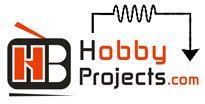Stepper Motor Introduction
In Theory, a Stepper motor is a marvel in simplicity. It has no brushes, or contacts. Basically it's a synchronous motor with the magnetic field electronically switched to rotate the armature magnet around.
A Stepping Motor System consists of three basic elements, often combined with some type of user interface (Host Computer, PLC or Dumb Terminal):

The Indexer (or Controller) is a microprocessor capable of generating step pulses and direction signals for the driver. In addition, the indexer is typically required to perform many other sophisticated command functions.
The Driver (or Amplifier) converts the indexer command signals into the power necessary to energize the motor windings. There are numerous types of drivers, with different current/amperage ratings and construction technology. Not all drivers are suitable to run all motors, so when designing a Motion Control System the driver selection process is critical.
The Step Motor is an electromagnetic device that converts digital pulses into mechanical shaft rotation. Advantages of step motors are low cost, high reliability, high torque at low speeds and a simple, rugged construction that operates in almost any environment. The main disadvantages in using a step motor is the resonance effect often exhibited at low speeds and decreasing torque with increasing speed.
